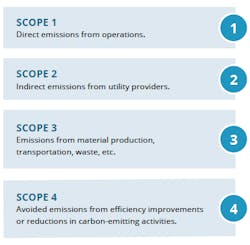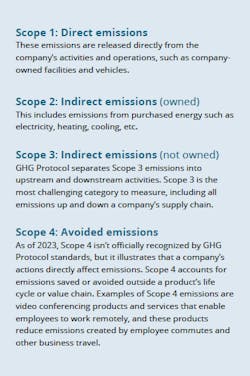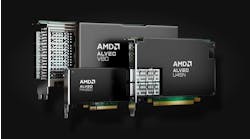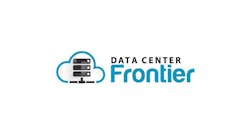The Great Cloud Rebalancing: Top Methods To Modernize Your Infrastructure and Workloads
This launches our article series on the new balance between the cloud and the modern data center.
New IT computing scenarios are driving growth in cloud and data center services. These include more connected devices, increasing use cases around mobility and a greater reliance on data center reliability. These new IT computing solutions are being deployed by migrating traditional IT services to cloud and data center provider alternatives. Over the past few years, business leaders have formed a clearer picture of where workloads should live and why.
According to the latest AFCOM report, a clear majority of respondents (83%) are seeing a repatriation of workloads from cloud computing back to on-premise data centers or colocations. Businesses of all sizes are taking the time to quantify cloud’s value and cost. In the report, we saw that ERP systems, custom applications and commercially licensed databases are all on the list to be repatriated. Here’s the big difference:
Leaders will pay closer attention to how budgets are being spent. Just because something started in the cloud doesn’t mean it has to live there forever.
Trends on how critical workloads should be deployed now fuel the push for more efficient data center utilization and, more specifically, an improved overall digital infrastructure. However, the big question is, what does that improved infrastructure look like? At the heart of the IT infrastructure, a data center capable of scaling with the needs of the business is crucial. However, not all data center and digital infrastructure strategies are created equally. Not all services can support your requirements; specific needs will vary from business to business.
INTRODUCTION
Before adopting technologies like the cloud, data centers were seen as cost centers, supporting the business’s essential or mechanical function. Today, data centers and digital infrastructure are as tightly bonded to the business as ever. These strategic parts of the organization are no longer simply “supporting” the business. In many cases, they run and are the business.
A new report from Fortune Business Insights indicates that the global demand for more efficient IT technologies combined with the economic advantages of modern, consolidated connectivity applications has contributed to the exponential rise in the scale and power of data centers. As the report notes, the global data center infrastructure market size is projected to reach $142.31 billion by 2027, compared to 2019, when the global market value stood at $94.56 billion.
The rapidly evolving competitiveness in the global market and advanced technologies, such as cloud computing and big data have made it simpler and more cost-effective for enterprises to shift their workload to self-contained data centers. Leading organizations want these options to improve data locality, security, sustainability and manage costs more effectively. Data center efficiency and related infrastructure support services have made it far more attractive for business leaders to balance critical workloads between cloud and data center solutions. They accomplish this by leveraging improved designs, modular solutions and an improved understanding of what needs to reside in the cloud and on-premises. For many organizations, moving to an on-premise model allows them to directly manage infrastructure costs that otherwise would have been entirely out of their control. This model includes modern workloads like DevOps, Kubernetes clusters and even AI development.
There have been proven trends in the repatriation of workloads from cloud computing to the data center. For the past three years, the AFCOM State of the Data Center report indicated a significant trend in how organizations view cloud solutions. Definitions are blurred as the cloud takes on a broader meaning where it’s not just public, hybrid or multi-cloud solutions.
Let’s pause here. These trends don’t indicate that cloud computing is going away; instead, going to the cloud is no longer a primary strategy. Instead, there is a maturity around cloud solutions where organizations understand what needs to be in a public cloud and what should live on-premises.
Further, there has been a clear hyperscale shift in the industry. Leaders continue to see more efficient, dense and smarter hyperscale designs in the data center space, further impacting the market. We’ll touch on this in a later article.
A big question for many in this space revolves around today’s digital infrastructure components. How do you more effectively balance cloud and data centers? What does a supply chain designed to support digital infrastructure look like? How do you ensure sustainability and meet efficiency goals while developing future data center ecosystems?
The Evolution of the Data Center: Design, Component and Services Concepts
In a connected world, our digital infrastructure has come a long way. Data centers can be traced back to the early days of computing when the first computers were developed in the mid-20th century. These early computers were room-sized machines requiring large amounts of power and cooling. The first data centers were essentially large rooms or buildings designed to house and protect these early computers.
As computing technology continued to evolve, so did the need for larger and more specialized data centers. In the 1960s and 1970s, mainframe computers became more common, and data centers began incorporating specialized equipment to support their operation. Large corporations or government agencies typically owned and operated these early data centers and used them to process and store data.
The rise of the Internet in the 1990s brought about a new era of data center development. The explosion of web-based applications and e-commerce created a massive demand for data center capacity, and companies like Amazon, Google and Microsoft began to invest heavily in building massive data centers to support their online services.
Today, data centers are essential infrastructure for the global digital economy. They provide the computing power and storage capacity necessary to support everything from social media and e-commerce to scientific research and advanced analytics. Data centers are also critical to the functioning of the Internet and enable global communication and collaboration on an unprecedented scale.
As the demand for digital services grows, data centers will play an increasingly important role in the global economy. The latest trends in data center design and technology include using renewable energy sources, artificial intelligence and machine learning and edge computing, which brings computing resources closer to the end-user for faster and more efficient processing.
However, the evolution of data centers and the cloud has also brought about emerging challenges, which can be described as growing digital pains. Let’s briefly explore the top 10 challenges impacting modern infrastructure as many in the industry drive towards a more modern design.
Top 10 digital infrastructure challenges
Let’s look at 10 emerging challenges impacting the data center industry today.As data centers evolve, complexity increases. As a result, we see more errors and outages due to human error. In the cloud, you won’t have as much control over physical systems and, in some cases, workloads. When working with colocation partners, you’ll get a lot of that control back, but you’ll need to be careful with it. Human error is a crucial balance consideration when working with cloud and on-premises solutions.
According to the Uptime Institute’s 2022 Outage Analysis, the consequences and cost of downtime are worsening, with 60% of failures now resulting in at least $100,000 in total losses. It also found that when significant outages happen, over 85% of the incidents stem from staff failing to follow procedures or flaws in the processes themselves. IDC estimates that human error costs organizations more than $62.4 million annually.
Tedious tasks and manual processes are significant factors in creating human errors. Work with partners that offer multivendor support for your critical and production equipment to reduce human error.
To address these challenges, data center leaders must work with partners and services solutions to reduce human error. Specifically, managed services providers (MSP) can ensure you retain control of your systems while eliminating human error.
Removing human error and working through the challenges mentioned above are critical parts of digital modernization efforts. Further, these initiatives help us better understand the physical infrastructure and how it relates to cloud.
Digtal modernization is impacting physical infrastructure
So far, we’ve covered modernization efforts, impacts from human error and the evolution of digital infrastructure. A significant part of modernization is understanding which workloads need to live in the cloud and which should live on-premises.
Too often, traditional modernization focuses on virtual systems, cloud computing, application modernization and data optimization. However, your physical infrastructure supports all of this, and digital modernization efforts have impacted physical infrastructure. You can find these modernizations in everything from DCIM software solutions to physical infrastructure management and advanced containment solutions.
Leaders in the IT and business space have a clearer understanding of where their physical infrastructure plays a crucial role in digital modernization efforts. Without a solid data center and technology foundation, having good partners in place and deploying with best practices in mind, for example, modernization projects will be a challenge. While there are a few key trends to be aware of, think Generative AI and edge computing, working with the right partner is the only means to stay up to date with even the most modern workloads requirements. To achieve infrastructure balance, be sure to work with the right type of partner.
According to Gartner, around 10% of enterprise-generated data is created and processed outside a traditional centralized data center or cloud. By 2025, Gartner predicts this figure will reach 50%. This means that services around the edge will continue to evolve and grow. This is also why you need to work with a partner who can help you address common issues like consistency between deployments, reliability, remote installation, connectivity, monitoring and management and security. Furthermore, the edge will require a broader focus on connectivity and telecommunications to ensure the best possible experience.
Lower emissions and improve uptime by working with a new type of partner
Finding the right balance between technologies, applications and physical infrastructure is daunting. Partners and data center leaders can help navigate the cloud and data center waters together. The most effective partners have seen how technology and emerging business requirements have evolved to take a much more macro perspective to create a digital infrastructure that ensures performance, latency control and efficiency.
Partners that help us keep our digital infrastructure operating efficiently support the balance between the cloud and various data center models such as on-prem, hybrid, etc.
Not all partners can adequately design, implement and maintain a digital ecosystem. The answer might be a combination of solutions, and your partner must understand which applies to your business.
Below is a short list of what good partners focus on when creating an improved infrastructure balance:
- Digital connectivity (including latency, resiliency, performance and networking)
- New types of managed services
- Improving time-to-market and speed-to-deploy
- Supply chain management
- Cloud services (public, private, edge, hybrid, multi-cloud)
- Emerging data center architecture (edge and 5G, hyperscale, cloud, colocation, and more)
- Ensuring the strategic value of the digital infrastructure
- Green technology and energy consumption
Let’s stay on that last point for a minute. Working with greener technology and improving energy consumption has become one of the most critical consideration points when designing digital infrastructure. It’s a vital part of the cloud and data center balance.
Going green is now a significant part of the transformation effort (and it's excellent for the business)
Efficiency, modernization and green solutions go hand in hand. Too often, ensuring that your design is green or sustainable is left towards the end of an architectural discussion. Going green isn’t only good for the environment; it’s also great for business. There have already been numerous studies indicating that going green and using energy efficiently is excellent for the company. For example, an S&P 500 study shows how organizations with sustainability initiatives and technologies built into their overall strategy will outperform those without. According to the report, these organizations see an 18% higher ROI because of how efficiently they manage and plan for climate change and energy utilization.
Another key focus is understanding and working around carbon emissions. First established in 2001 by the Greenhouse Gas Protocol, “Scopes” categorizes the emissions companies create in their direct, indirect, and overall supply chain and GHG Protocol uses Scopes 1, 2 and 3. Although not officially classified, Scope 4 is quickly gaining traction among companies measuring their emissions.
A good partner will help focus on climate impact without compromising performance. A good services partner will help you track sustainability as it grows in importance. For example, extending hardware refresh cycles by 3-7 years lowers emissions and relieves budget pressures immediately. Since the equipment is already manufactured, prolonging its lifetime ownership to 7-10 years slows the demand for new equipment.
As outlined in the Service Express 2023 Data Center and Infrastructure Report, IT professionals strive to extend equipment life cycles for sustainability and budget reasons. A longer equipment life benefits our planet and typically lowers IT costs without performance loss. Extending the life of gear is a growing consideration for many data center leaders. In finding the right balance, some will specifically look to further the life of their equipment as a far more cost-effective option than transitioning workloads into the cloud.
If you choose to extend the life of your gear, there are several considerations. There are concerns about reliability when companies consider longer equipment life cycles.
A data center solutions provider collected more than 15 years of data from more than half a million devices to understand equipment longevity and reliability. The data tracks when, how and the frequency of critical and non-critical equipment failures.
The data samples above demonstrate hardware is reliable well past the 5-to-12-year mark. If equipment meets immediate needs, delaying an unnecessary refresh can help reduce CO2 emissions, decrease IT spending, extend the life of the hardware investment and more.
Download the full report, Top Methods To Modernize and Balance Your Infrastructure, featuring Service Express, to learn more. In our next article, we'll dive into some specific modernization considerations.













